|
|
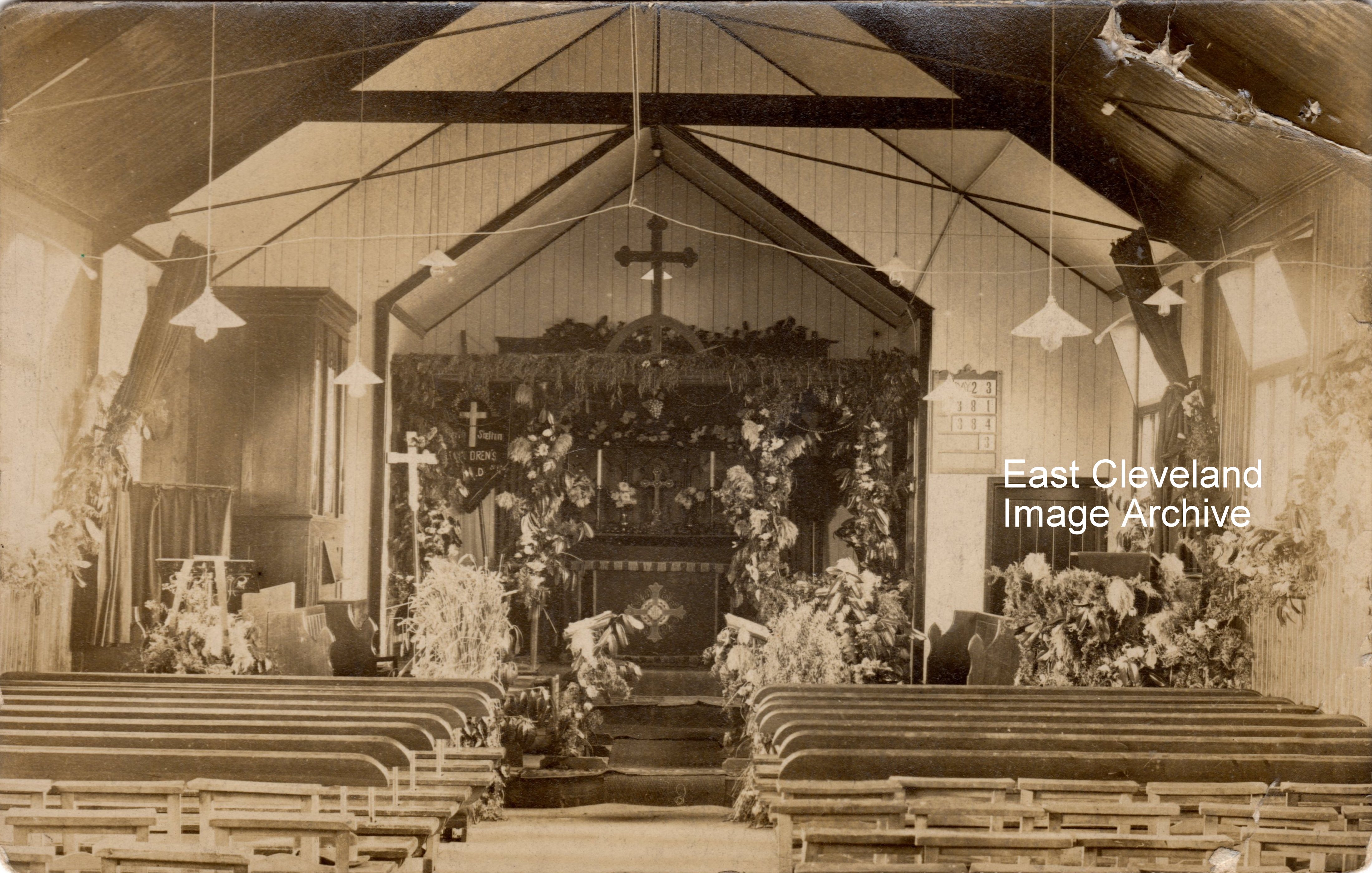
An image believed to be of the interior of North Skelton Wesleyan Methodist Chapel from possibly the 1920s and apparently dressed for a harvest festival or a wedding. The building still stands today and is still used as a place of worship, Geoff Kitching tells us: “The Chapel was corrugated iron on the outside and wood on the inside. My Dad had relatives living just round the corner in Wharton Street in the early 1900’s but he says that they were not Methodists but strictly Church of England.”
Image and information courtesy of Geoff Kitching (son of Bill Kitching formerly of Carlin How).
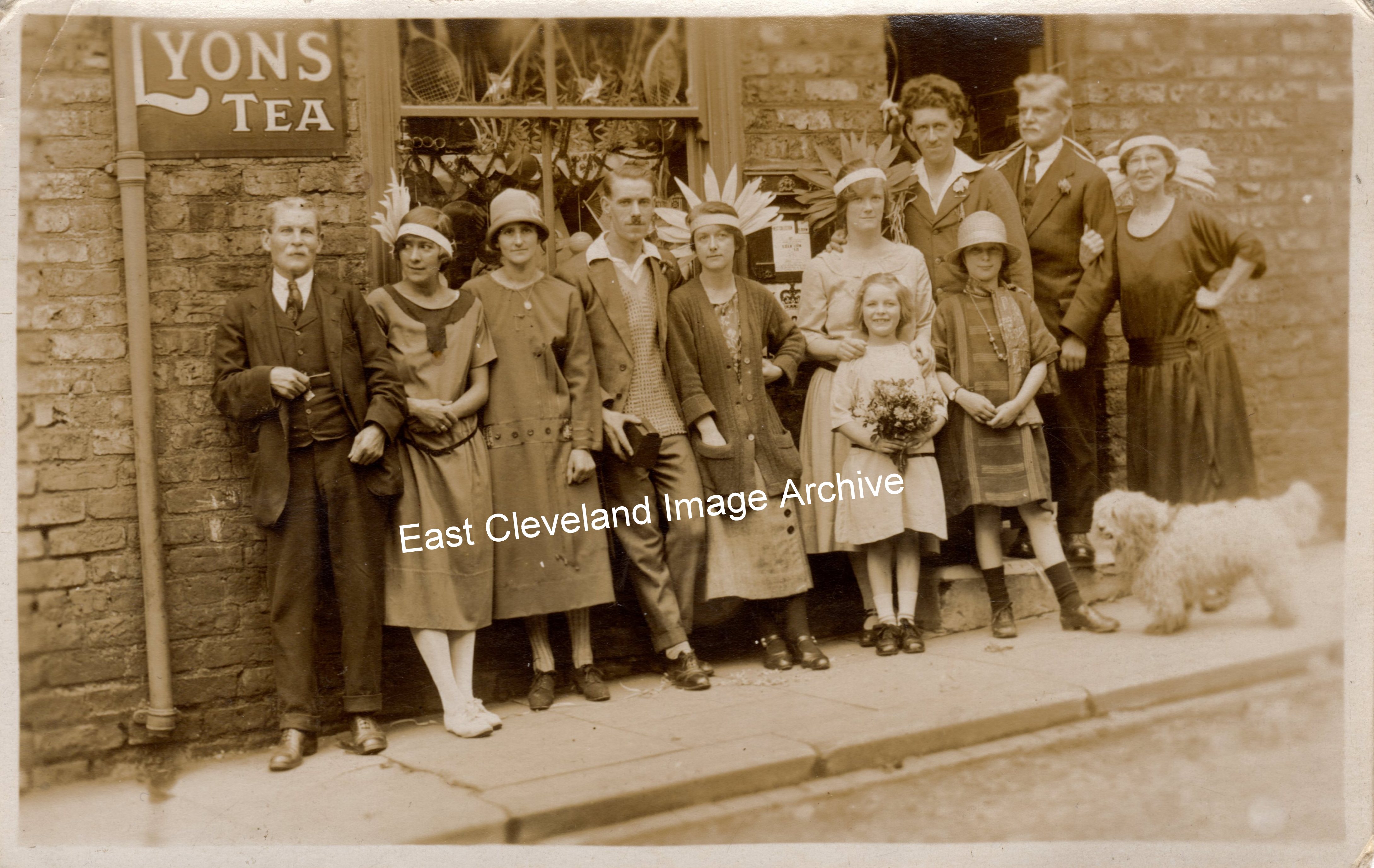
North Skelton Post Office in the 1920s, pictured we have: “The young girl with the flowers is my dad’s sister Sally Kitching and the other young girl is his eldest sister Edie. The post office was run by my dad’s great uncle Bill Young and his wife Bessie who are the two figures on the far right here. The young woman second from the left is dad’s aunt Annie (Smith), next to her is his Aunt Nellie and then Arch Aubrey who was the husband of Annie Smith (they married in 1924). I don’t know what the occasion was. We think the Post Office was at 10 Wharton Street.” The Archive can confirm that William (Billy) Young was Sub-postmaster with his wife Bessie at 10 Wharton Street; they still lived there in 1939. The Archive would again welcome information as regards the possible occasion, especially as all present were obviously celebrating some event.
Image and information courtesy of Geoff Kitching (son of Bill Kitching formerly of Carlin How).
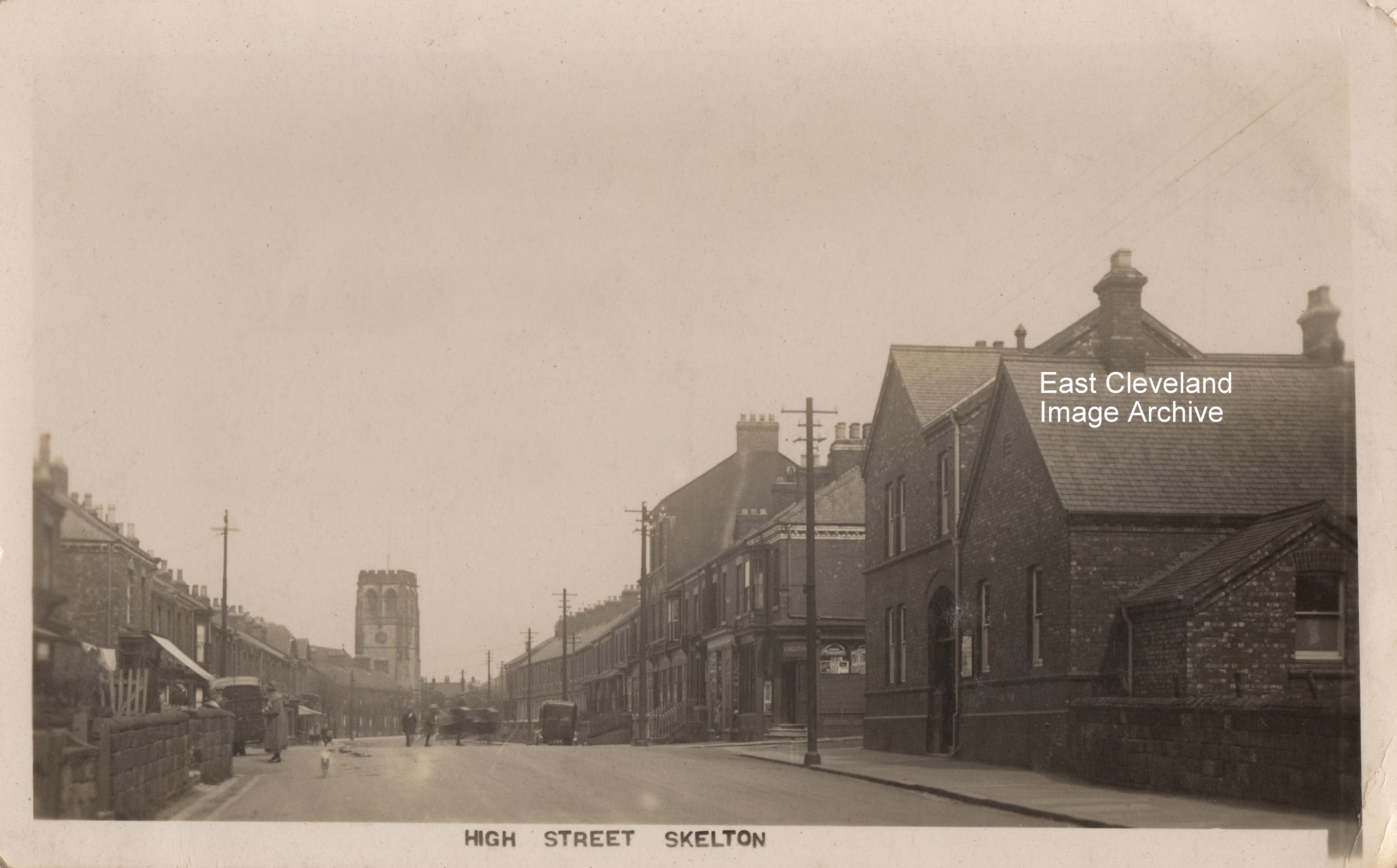
Originally known as the Skelton Literary Institute, this building stood on the corner across from what used to be Kingston’s Chemists and is the area currently being refurbished from the rough car park that has occupied the site for many years. Opened on 4th November 1899; Bill Danby in ‘History of Skelton In Cleveland’ tells us: “The £2,000 cost was paid for by the Wharton’s of Skelton Castle.”; as well as much interesting information about the management committee and the control of the building. Peter Appleton has advised: “The building was actually demolished in January 1994.” Judy Last tells us: “My grandfather, Albert Tuck, was Postmaster and ran the General Stores in Vaughan Street, North Skelton in the late 1890s after taking over the family business from his father, Edwin Tuck (who had been running the Grocers shop in Boosbeck since the late 1870s). At one time Albert was in partnership with his brother-in-law, John Thompson and the Stores was called Tuck & Thompson at that time. My father, Alexander Tuck, who was born above the Stores in 1897 often told me of watching the Magic Lantern slide shows at I believe the Institute in Skelton, and I would think that the Literary Institute would be the place he was talking about.”
Image courtesy of Julie Tyrka, additional information courtesy of Bill Danby and the Skelton In History Website. Thanks to Peter Appleton for the correct demolition date and to Judy Last for her update.
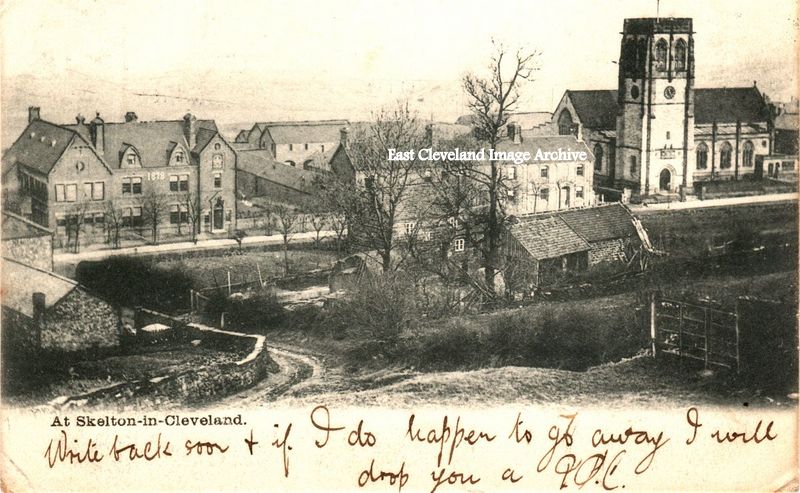
A further postcard view of Skelton High Street, with the Wharton Arms and All Saints Church viewed over Egg Cup farm; the then muddy lane to The Hills is now a metalled public road. Note also the trees planted in front of the Wharton Arms, I wonder how long they lasted? Peter Appleton assists with: “If my memory is not letting me down, they were still there in the 1950s. But perhaps, I’m wrong.” Owen Rooks advises: “I agree with you, Peter. I can remember the trees being there into the early 1950’s as well. They went from the Wharton Arms up to the entrance to Home Farm next to the church. Egg Cup Farm was occupied then by Eddie Dunning who used his ancient saloon car as a taxi; he took me and my family to Saltburn station on several occasions. In between times, judging by the aromas within it, I think he used the same car to transport his livestock! The building with its gable end pointing towards the camera at the extreme left of the picture was in my youth butcher Bob Young’s abattoir and his shop was on the High Street at the other side of the back lane. I and some of my mates once watched Butcher Young at work there, from a distance but within eye and earshot of the attendant sights and sounds. Kids weren’t wrapped up in cotton wool in those days!” Peter Appleton adds: “I recall watching him at work, too. I lived in Robinson Street (beside the church) and went to junior school at Skelton Green. If Bob was busy slaughtering and butchering as I walked down from The Hills on my way home, I’d stop off and watch him.”
Image courtesy of Peter Appleton, thanks to Owen Rooks and Peter Appleton for the updates.
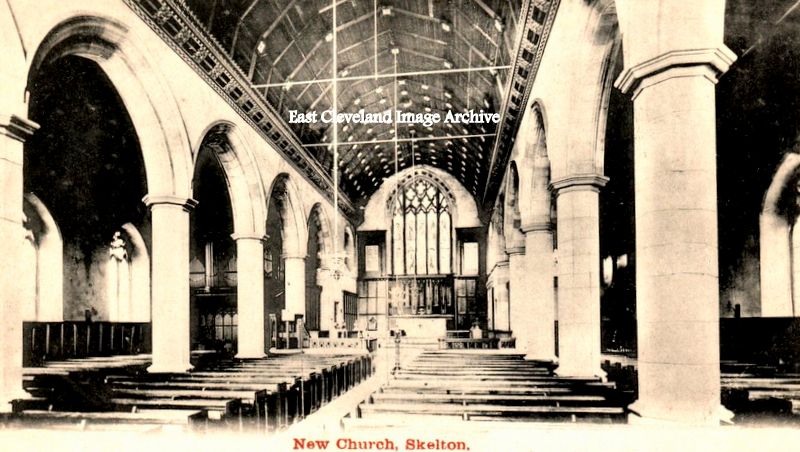 A postcard view of the interior of Skelton’s All Saints church; built in 1884 to replace the old All Saints church which still stands close to Skelton Castle. In June 1884 the new pulpit was installed; “designed by R. J. Johnson architect of Newcastle it is octagonal in form on a curved stone base”. This magnificent church still stands proud beside the High Street, the stone now more darkened than when first built. A postcard view of the interior of Skelton’s All Saints church; built in 1884 to replace the old All Saints church which still stands close to Skelton Castle. In June 1884 the new pulpit was installed; “designed by R. J. Johnson architect of Newcastle it is octagonal in form on a curved stone base”. This magnificent church still stands proud beside the High Street, the stone now more darkened than when first built.
Image courtesy of Peter Appleton, additional information courtesy of Bill Danby’s ‘History of Skelton in Cleveland’.
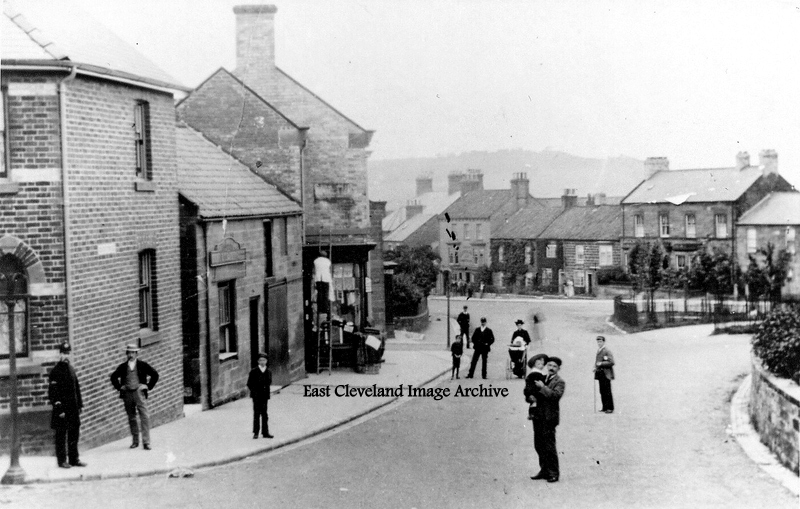
Now sadly painted over the former Police Station standing at the western end of Skelton High Street was a magnificent Victorian brick building; the Police Station was purchased from Skelton Castle Estate in 1921 by the then North Riding Constabulary. Bulmer’s Directory of 1890 lists Thomas Imeson as the Police Sergeant resident at the building; Kelly’s Directory of 1909 lists: “Sergeant Richard Benjamin Gamble + one Constable”, the building was superseded by a modern purpose-built building on Derwent Road in the late 1950s and subsequently closed. This postcard view shows a quieter road, the lady can push her pram up the near side of the road without risk; no thundering traffic then! Peter Appleton has further advised: “The old Police Station, more properly 1 South Terrace, is first recorded in the Skelton Castle Estates Rent book for Lady Day 1873 (25th March 1873) when a payment of £27.10s.0d was recorded. The entry bore the annotation “New”. The police presence there can be traced through successive censuses 1881-1911. The property was sold to the North Riding County Council in April 1921 for £620. The North Riding County Council sold the building in July 1963 to a Mr A E Danks. The police presence in Skelton, which started in August 1862, is described in more detail in my book: My Grandad was a “Felon”, pp 62-4”
Image and update courtesy of Peter Appleton.
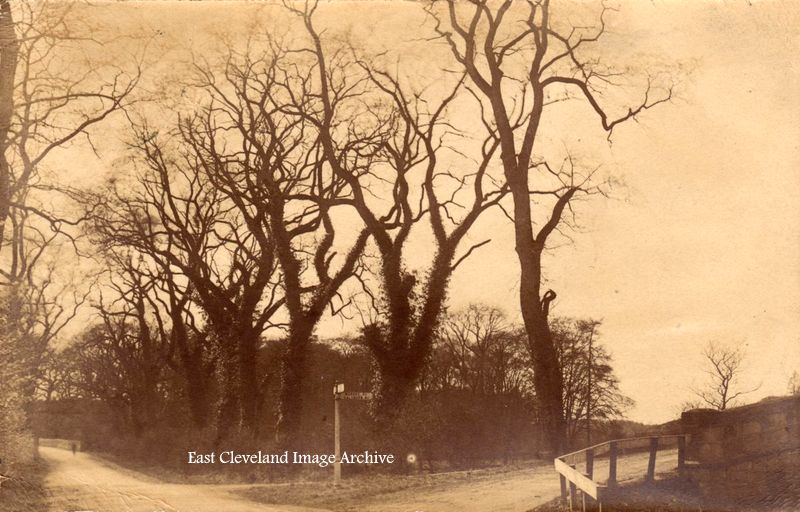
Situated in Skelton Ellers, the bridge to the right in this postcard view is of Upleatham bridge, built in 1755 it is Grade II listed. Similarly Ellers bridge which can be seen at the left, built in 1756 is also listed. Both bridges have stood the test of time, despite many ‘knocks’ over the years from passing motor traffic.
Image courtesy of Peter Appleton.
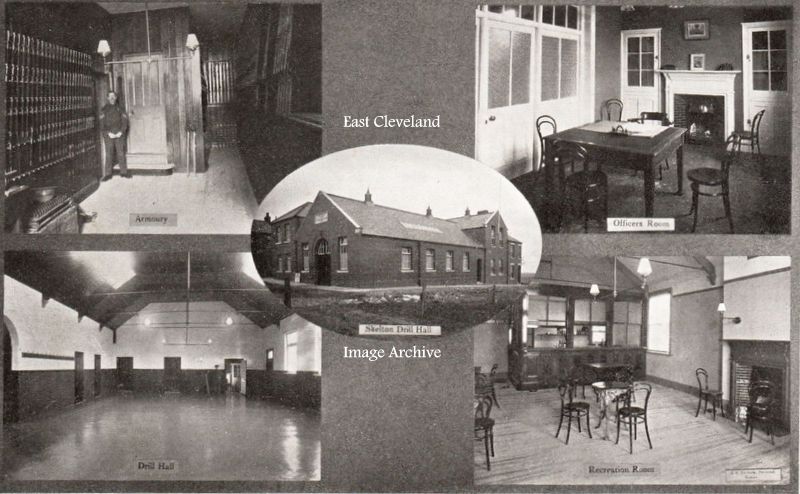
This postcard view of a building which will be remembered by many; internally it bears no resemblance to those views included in this image and externally is passed by many who are unaware of the buildings former essential use. Originally opened on 26th December 1913, for the Skelton Territorials “G” Company of the 4th Yorkshire Regiment, in the 1960s it became a social club. After burning down it was altered into apartments, bearing the title of Marlborough Court; it still stands at the southern end of Marlborough Road.
Image courtesy of Peter Appleton.
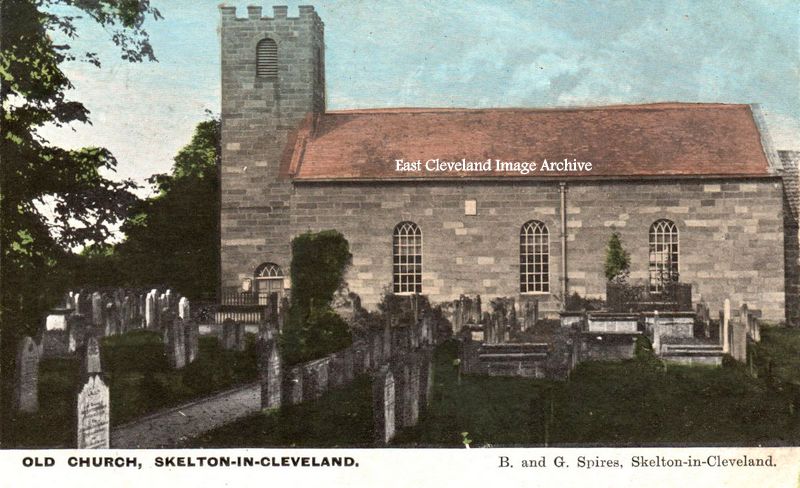
A postcard view of the old church of All Saints Skelton, from Skelton based B. and G. Spires; the Spires produced several hand-tinted postcard views of Skelton and the surrounding area during the early 1900’s. Peter Appleton tells us: “The original church was probably erected by one of the Fauconbergs, who inherited the Castle upon the death of Peter de Brus III without issue. His eldest sister, Agnes, married Walter de Fauconberg and thus the estate passed into the hands of that family, until their male line died out in 1407. The name on the Faculty for the pulling down and rebuilding the church is Joseph William Hall Stevenson, who inherited the estate from his father, John Hall Stevenson, in 1785. The rebuild cost £443.2s.7d according to the Church Wardens’ Accounts Book and took place during 1785 and 1786. The cost was covered by a donation of £100 from Joseph, the sale to the parishioners of the pews in the nave, east gallery (no longer extant) and west gallery, plus the sale to the local plumber of the lead recovered off the roof. Several other prominent citizens also signed the Faculty.” The interior retains many old fittings, including a three-decker pulpit. Part of an old 11th century stone sundial found in the church yard is now in the new church.”
Image and additional information courtesy of Peter Appleton.
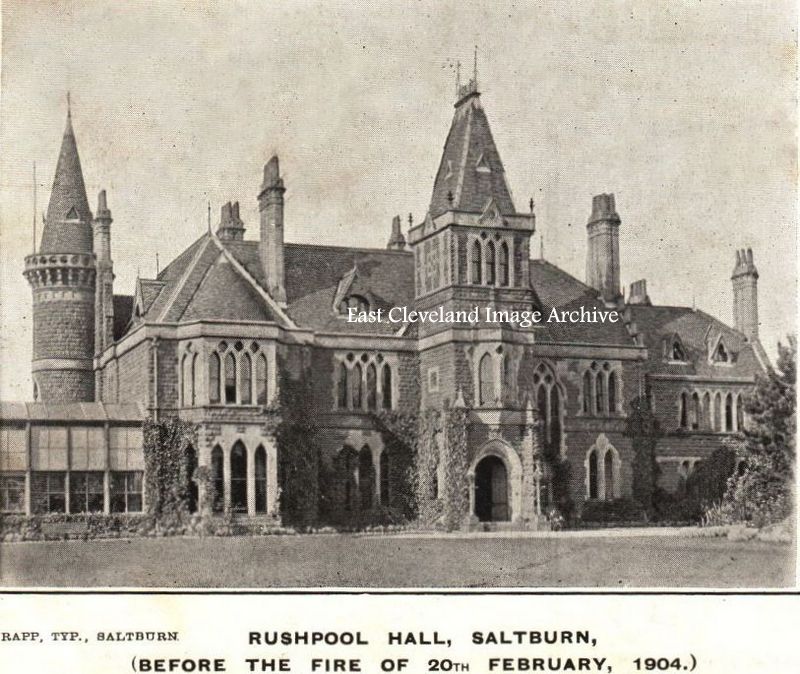
Rushpool Hall is one of the finest specimens of Victorian architecture to be found in North Yorkshire. It was constructed at the head of the valley gardens in Saltburn-by-the-Sea in the years 1863-4 for Mr John Bell, one of the Victorian pioneer Ironmasters of Bell Brothers a company that controlled and worked the ironstone mines at Skelton-in-Cleveland. It seems logical that the magnificent Rushpool Hall was built with the first ironstone raised from Bell Brothers Skelton Shaft mine. After John Bell died in 1888, Sir Arthur Dorman (of Dorman Long Iron & Steel Works) moved in. Sir Joseph Walton, coal mine owner, active Wesleyan Methodist and Liberal Party MP purchased the property after it was renovated in 1906 following the great fire in 1904. The Hall was almost destroyed when a maids candle accidentally caused a curtain to catch alight. The construction of the outer walls built from ironstone mined in the Bell brothers Skelton shaft mine is probably the main reason why the Hall survived the fire. It is today a hotel and premier wedding and function venue. This image produced by Rapp’s of Saltburn as a postcard, clearly titled as ‘Before the fire of 20th February, 1904’; it must have been very topical at the time!
Image courtesy of Peter Appleton, additional information courtesy of Rushpool Hall.
Page 1 of 1212345...10...»Last »
|
|




 A postcard view of the interior of Skelton’s All Saints church; built in 1884 to replace the old All Saints church which still stands close to Skelton Castle. In June 1884 the new pulpit was installed; “designed by R. J. Johnson architect of Newcastle it is octagonal in form on a curved stone base”. This magnificent church still stands proud beside the High Street, the stone now more darkened than when first built.
A postcard view of the interior of Skelton’s All Saints church; built in 1884 to replace the old All Saints church which still stands close to Skelton Castle. In June 1884 the new pulpit was installed; “designed by R. J. Johnson architect of Newcastle it is octagonal in form on a curved stone base”. This magnificent church still stands proud beside the High Street, the stone now more darkened than when first built.




Recent Comments